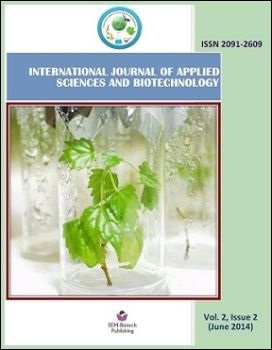Physicochemical Analysis and Microbial Diversity of Yamuna Water and Industrial Effluents
DOI:
https://doi.org/10.3126/ijasbt.v2i2.10352Keywords:
TDS, Tannery, Textile, effluent, BOD, ghatAbstract
Pollution has arisen as a serious environmental concern to the present world after industrialization of human societies. It has severely affected our air, soil and water sources. Looking to its global, national, regional and local dimensions, it is now imperative to check it at each and every level. In the present study, 8 samples (3 Yamuna water samples, 3 tannery effluent samples and 2 textile effluent samples), were collected from different sites of Yamuna and exit points of textile and tannery Industries. Water and effluent samples were analysed for various physicochemical parameters (pH, TDS, hardness, chloride and BOD) using conventional methods. Afterwards these samples were utilized for isolation of the native bacterial species. All the samples were showing higher than the standard values for TDS (500mg/l), hardness (80-100 mg/l), chloride (250mg/l) and BOD (30mg/l). It was observed that the tannery effluents were showing maximum TDS values(1190-1240mg/l), followed by textile effluents (1190 and 1210mg/l) and Yamuna water (530-1180mg/l).Similarly, in case of chloride content, highest concentration range(828.8-1598mg/l)was shown by tannery effluents. pH value was nearly neutral for Yamuna water, slightly acidic in case of textile effluents and more acidic for tannery samples. Highest range of hardness values were observed for the tannery effluents (860-880mg/l) followed by textile effluents (760 and 860mg/l). The BOD values were nearly similar for all the samples with maximum values being observed for tannery effluents (42-48 mg/l). Thus it can be inferred that all the samples were highly polluted and need to be treated by suitable methods. There were 11 cultures purified, that could be employed in bioremediation purposes.
DOI: http://dx.doi.org/10.3126/ijasbt.v2i2.10352
Int J Appl Sci Biotechnol, Vol. 2(2): 199-205
Downloads
1154
820




